#If the valve cover gasket is not the source of your oil leak
Explore tagged Tumblr posts
Text
How to Diagnose an Oil Leak in Your Audi: Expert Tips and Techniques

Oil leaks are a common concern for Audi owners and can lead to serious engine damage if left unaddressed. Identifying the source of an oil leak early can prevent costly repairs and keep your Audi running smoothly. This guide provides expert tips and techniques to help you accurately diagnose and address oil leaks in your vehicle.
Why Oil Leaks Happen in Audis
Audi engines are engineered for high performance, but their complexity can make them prone to oil leaks over time. Common causes include:
Worn or damaged seals and gaskets: The valve cover gasket, oil pan gasket, and rear main seal are frequent culprits.
Oil filter or drain plug issues: Improper installation or wear can cause leaks in these areas.
Cracked or degraded engine components: Over time, parts like the oil cooler or hoses may crack or corrode, leading to leaks.
Overfilled oil levels: Excess oil can increase pressure and cause seals to fail.
Signs of an Oil Leak in Your Audi
Detecting an oil leak early requires vigilance. Common symptoms include:
Visible oil puddles: Dark, greasy spots under the car, often beneath the engine or transmission.
Burning oil smell: A distinct odor, especially noticeable while driving or after parking.
Low oil levels: Frequent drops in oil levels, even after topping up.
Warning lights: An illuminated oil pressure or low oil warning on the dashboard.
Smoke from the engine: Leaking oil that burns on hot engine components may produce smoke.
Step-by-Step Guide to Diagnosing an Oil Leak
Follow these steps to pinpoint the source of an oil leak in your Audi:
1. Inspect the Engine Area
Open the hood and use a flashlight to examine the engine for signs of oil seepage.
Focus on common areas like the valve cover, oil pan, and oil filter housing.
2. Check Under the Car
Look beneath the car for oil spots or drips.
Use a piece of cardboard under the car overnight to identify where the oil is leaking from.
3. Clean the Suspected Area
Use a degreaser to clean the engine and remove old oil residues.
A clean surface makes it easier to identify fresh leaks during the next drive.
4. Use UV Dye and a Leak Detection Kit
Add a UV dye to the engine oil, available at most automotive stores.
Drive the car for a short distance, then use a UV flashlight to trace the glowing dye to the source of the leak.
5. Inspect the Oil Filter and Drain Plug
Check for tightness and proper installation.
Look for signs of damage or worn threads.
6. Examine Seals and Gaskets
Inspect the valve cover gasket, oil pan gasket, and rear main seal for cracks, wear, or misalignment.
Pay close attention to any oil residue near these areas.
7. Check Engine Components
Look at oil lines, the turbocharger (if equipped), and the oil cooler for signs of leakage or damage.
When to Seek Professional Help
Some oil leaks may require advanced tools or expertise to diagnose accurately. Visit a certified Audi service center if:
You cannot locate the source of the leak.
The leak is severe or causing rapid oil loss.
The leak is accompanied by warning lights or unusual engine performance.
Preventing Oil Leaks in Your Audi
Regular maintenance is key to avoiding oil leaks. Follow these tips to keep your Audi in top condition:
Change the oil regularly: Use the manufacturer-recommended oil type and follow the service schedule.
Inspect gaskets and seals: During routine maintenance, check for signs of wear or damage.
Monitor oil levels: Frequently check and maintain proper oil levels.
Address warning signs early: Don’t ignore unusual smells, drips, or dashboard alerts.
Conclusion
Diagnosing an oil leak in your Audi requires careful observation and attention to detail. By inspecting key areas, using tools like UV dye, and addressing leaks promptly, you can prevent more extensive damage and maintain your vehicle’s performance. For complex issues, rely on Audi-certified technicians to provide expert diagnosis and repair, ensuring your car stays roadworthy and reliable.
#audi car#audi car oil leak#audi service center#audi car maintenance#audi car mechanic#audi car engine oil change#audi car services
0 notes
Text
How to Troubleshoot Common Problems After Installing a Used BMW Engine?

Installing a used BMW engine can be a cost-effective solution to extend the life of your vehicle. However, even with careful installation, some issues may arise that require troubleshooting. Understanding common problems and their solutions can save time and prevent further damage. This guide covers key areas to focus on after installing a used BMW engine, ensuring you can address issues promptly and keep your car running smoothly. We will explore various problems and provide practical solutions, emphasizing keywords such as engine replacement, reconditioned engines, and supply and fit.
Identifying Engine Performance Issues
After an engine replacement, you may notice performance issues such as loss of power, rough idling, or stalling. These issues could be due to several factors including improper installation, incompatible parts, or issues with the engine itself. Start by checking the engine mounts to ensure they are secure and aligned correctly. Misaligned mounts can cause vibration and affect performance. Also, inspect all connections, including fuel lines and electrical connectors, to ensure they are properly fitted. Using diagnostic tools to scan for error codes can also help identify specific issues affecting performance.
Checking for Leaks
Leaks are a common problem after installing a used engine, whether it be oil, coolant, or fuel leaks. Start by thoroughly inspecting the engine for any visible signs of leaks. Pay close attention to gasket areas, hoses, and seals. If you find any leaks, tighten or replace the affected components. Oil leaks might stem from a damaged oil pan gasket or valve cover gasket, while coolant leaks could be from worn-out hoses or the radiator. Regularly check fluid levels and top up as necessary. Using high-quality replacement parts during the engine replacement can also help prevent leaks.
Resolving Electrical Issues
Electrical problems can manifest after an engine swap, affecting the vehicle's functionality. Common issues include malfunctioning sensors, starter problems, or faulty wiring. Begin by checking all electrical connections to ensure they are secure and correctly connected. Faulty grounds can cause numerous issues, so ensure all ground connections are clean and tight. Use a multimeter to test the battery voltage and alternator output. If the engine's computer was replaced or reprogrammed during the installation, verify that it is functioning correctly and compatible with your vehicle's systems.
Addressing Overheating Problems
Overheating can result from several issues, including air pockets in the cooling system, a malfunctioning thermostat, or a failing water pump. Start by bleeding the cooling system to remove any trapped air. Ensure the thermostat is opening at the correct temperature and that the water pump is circulating coolant efficiently. Check the radiator for blockages and ensure the cooling fans are operational. Regularly monitor the engine temperature gauge and inspect coolant levels. Using the right type of coolant recommended by BMW can also prevent overheating issues.
Fixing Fuel System Issues
Fuel delivery problems can cause poor engine performance or starting issues. Inspect the fuel pump, fuel filter, and injectors to ensure they are functioning correctly. A clogged fuel filter can restrict fuel flow, leading to stalling or poor acceleration. Clean or replace the fuel injectors if necessary, and check the fuel pressure to ensure it meets the manufacturer's specifications. Also, inspect the fuel lines for any signs of leaks or damage. Using high-quality fuel and keeping the fuel system clean can help maintain optimal engine performance.
Dealing with Unusual Noises
Unusual noises such as knocking, ticking, or whining can indicate underlying problems. Identify the source of the noise by listening carefully while the engine is running. Knocking sounds may suggest issues with the BMW engine bearings or piston slap, while ticking noises could be related to valve lifters or timing chain problems. Whining noises might indicate issues with the alternator, power steering pump, or belt tensioner. Address these issues promptly to prevent further damage. Regular maintenance and using recommended oils and lubricants can help minimize unusual engine noises.
Ensuring Proper Exhaust Function
Exhaust system issues can lead to poor engine performance and increased emissions. Inspect the exhaust manifold, catalytic converter, and muffler for any signs of damage or leaks. Ensure that all exhaust components are securely attached and that there are no blockages. A faulty oxygen sensor can affect fuel mixture and engine performance, so replace it if necessary. Regularly check the exhaust system for any signs of corrosion or damage. Using high-quality exhaust parts and ensuring a proper fit during the engine replacement can help prevent exhaust issues.
Verifying Engine Compatibility
Compatibility issues can arise if the used engine is not an exact match for your vehicle. Ensure that the engine's specifications, including the engine control unit (ECU), match your vehicle's requirements. Differences in sensors, wiring harnesses, and mounts can cause compatibility problems. Double-check part numbers and consult with a BMW specialist if you encounter any issues. Using reconditioned engines from reputable suppliers can help ensure compatibility and reliability. Properly addressing compatibility issues during the supply and fit process can save time and prevent further problems.
Conclusion
Troubleshooting common problems after installing a used BMW engine requires a systematic approach and attention to detail. By addressing performance issues, checking for leaks, resolving electrical problems, and ensuring proper fuel system and exhaust function, you can maintain optimal engine performance. Regular maintenance and using high-quality parts during the engine replacement process can help prevent many of these issues. Understanding how to troubleshoot and fix these problems can save you time and money, ensuring your BMW continues to perform reliably. Always consult with a professional if you encounter complex issues or need assistance with the supply and fit of reconditioned engines. Read the full article
0 notes
Text
Jaguar XE Engine Problems: Solutions to Keep You Moving

Introduction:
The Jaguar XE Engine is famous for its performance and elegance, epitomizing the spirit of luxury sports cars. Anyhow, like any high-performance vehicle, it can face issues that may impact its functionality. Tackling these challenges not only guarantees your Jaguar XE continues to deliver an exciting drive but also enhances the longevity and the value of this incredible vehicle, keeping the thrill of the road alive.
Common Issues with Jaguar XE Engine:
- Engine Misfire: One of the most frequent problems faced by Jaguar XE owners is engine misfire. This happens when one or more cylinders fail to ignite properly, causing reduced power, rough idling, and maximizing fuel consumption. The cause can range from faulty spark plugs to issues with the ignition coil or fuel injector. - Solution: To sort out misfires, it’s necessary to conduct a comprehensive inspection of the ignition system. Replacing worn-out spark plugs and coil can restore engine efficiency. Also, checking the fuel injectors for clogs and guaranteeing the fuel system is clean can help prevent future occurrences. - Oil Leaks: Another common issue encountered by the Jaguar XE Engines is the oil leaks. Leaks can stem from various sources, such as worn seals or gaskets, especially around the oil pan and valve covers. These oil leaks not only reduce engine lubrication but also cause severe damage if left unattended. Tackling oil leaks quickly is necessary to maintain the engine’s performance and longevity. - Solution: Routinely examine your engine for oil spots under your vehicle. If you point out a leak, it’s advisable to have a specialist technician assess and replace any faulty seals or gaskets. Observing the oil level and maintaining a routine oil change schedule can also reduce leak risks. - Engine Overheating: Overheating is the main issue that can severely affect the Jaguar Engine. Faults in the cooling system, like a failing water pump, radiator issues, or low coolant levels, can cause a rise in engine temperature. Ignoring this issue can cause catastrophic engine damage. - Solution: To prevent this issue, make sure the coolant is at the proper level and is free from contamination. Regularly check the radiator and hoses for signs of wear or leaks. If overheating occurs, stop driving quickly and allow the engine to cool down before identifying the problem. - Faulty Sensors: The Jaguar XE Engine is equipped with various sensors that observe several parameters to boost performance and efficiency. Faulty sensors like mass airflow or oxygen sensors can cause poor engine performance, increased emissions and lesser fuel economy. - Solution: If you face a drop in performance or notice the check engine light illuminating, have the vehicle’s diagnostic system scanned. Replacing the faulty sensors can restore the engine performance and boost fuel efficiency, making sure that your Jaguar XE Engine works as intended.
Conclusion:
The Jaguar XE Engine is the prime example of modern engineering, delivering a blend of power and sophistication. Anyhow, understanding common issues such as misfires, oil leaks, overheating, and faulty sensors can empower you to tackle these problems quickly. Regular maintenance and quick repairs are necessary to keep your Jaguar Engine performing at its best. By staying energetic, you can enjoy the luxury and thrill of driving your Jaguar XE without interruption.
FAQs
What is the main cause of engine misfire in the Jaguar XE Engine? Defective spark plugs, ignition coils, fuel injectors. How can the oil leaks in the Jaguar XE Engine can be prevented? Daily inspect for leaks and replace worn seals or gaskets quickly. What should be checked to prevent the Jaguar XE Engine from overheating? Make sure proper coolant levels and examine the radiator and hoses for weak or leaks. What are the impacts of faulty sensors on the Jaguar XE Engine? Poor engine performance, maximized emissions, and minimzed fuel economy. Why is routine maintenance necessary for the Jaguar XE Engine? It prevents common issues and makes sure the engine performs at its best. Read the full article
0 notes
Text
A Comprehensive Guide to Fixing Oil Leaks in Your Mini Cooper
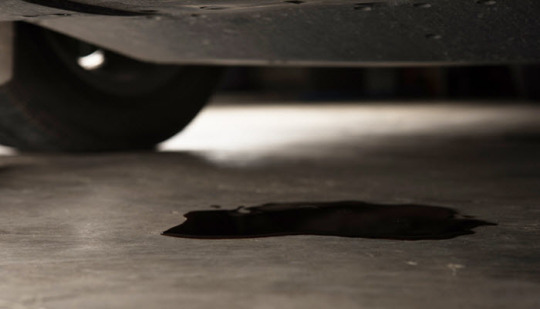
Mini Coopers are beloved for their style, performance, and compact design. However, like any vehicle, they can suffer from oil leaks, which, if left unchecked, can lead to serious engine damage and costly repairs. In this comprehensive guide, we'll delve into the common causes of oil leaks in Mini Coopers and provide step-by-step instructions for diagnosing and fixing them, empowering Mini owners to keep their cars running smoothly.
Understanding Mini Cooper Oil Leak Causes:
Mini Coopers typically experience oil leaks from various points in the engine. Common culprits include the oil pan gasket, valve cover gasket, oil filter housing, and crankshaft seals. These leaks can be caused by factors such as age, high mileage, harsh driving conditions, and poor maintenance. Identifying the specific source of the leak is crucial for effective repair and prevention of further issues.
Diagnostic Steps:
Visual Inspection:
Conduct a thorough visual inspection of the engine bay and underneath the vehicle for signs of oil leaks. Look for oil puddles or drips, as well as oily residue on engine components. Pay close attention to the areas around the oil pan, valve cover, and oil filter housing.
UV Dye Test:
To pinpoint the exact location of the leak, perform a UV dye test. Add UV dye to the engine oil and run the engine for a short period. Then, use a UV light to illuminate the engine bay and underside of the car. The dye will fluoresce under the UV light, making it easier to identify the source of the leak.
Repairing Common Oil Leak Areas:
Oil Pan Gasket Replacement:
Begin by safely raising the Mini Cooper and draining the engine oil. Remove the bolts securing the oil pan and carefully detach it from the engine block. Clean the mating surfaces thoroughly, then install a new oil pan gasket and reattach the oil pan. Refill the engine with fresh oil and lower the vehicle.
Valve Cover Gasket Replacement:
Remove the engine cover and disconnect any components obstructing access to the valve cover. Undo the bolts holding the valve cover in place and lift it off the engine. Remove the old gasket and clean the valve cover and cylinder head mating surfaces. Install a new valve cover gasket and reassemble the components in reverse order.
Oil Filter Housing Gasket Replacement:
Drain the engine oil and remove the oil filter housing from the engine block. Carefully detach the old gasket and clean the mating surfaces. Install a new gasket onto the oil filter housing and reattach it to the engine block. Refill the engine with oil and check for leaks.
Preventive Maintenance Tips:
Regular maintenance is key to preventing oil leaks in Mini Coopers. Here are some tips to keep your vehicle in top condition:
Follow the manufacturer's recommended oil change intervals and use high-quality synthetic oil.
Inspect the engine bay regularly for signs of oil leaks, such as puddles or stains.
Check the oil level frequently and top up as needed to prevent running the engine on low oil.
Replace worn or damaged gaskets and seals promptly to prevent leaks from developing.
Conclusion:
By understanding the common causes of oil leaks and following the step-by-step repair instructions outlined in this guide, Mini Cooper owners can effectively address oil leaks and prevent further damage to their vehicles. Regular maintenance and timely repairs are essential for keeping Mini Coopers running smoothly and enjoying many miles of motoring adventures.
#mini cooper#mini cooper oil leak#mini cooper service center#mini cooper mechanic#mini cooper engine oil change#mini cooper services
1 note
·
View note
Text
7 Common Repair Problems Mini Cooper Owners Face
Owning a Mini Cooper is a unique experience. These iconic cars are known for their compact size, quirky designs, and spirited driving dynamics. However, like any vehicle, Mini Coopers are not immune to repair issues.

In this blog, we’ll explore seven common repair problems that Mini Cooper owners often encounter. Whether you’re a seasoned Mini enthusiast or a newcomer to the brand, understanding these issues can help you maintain your car’s performance and reliability.
Mini Cooper Electrical System Problems
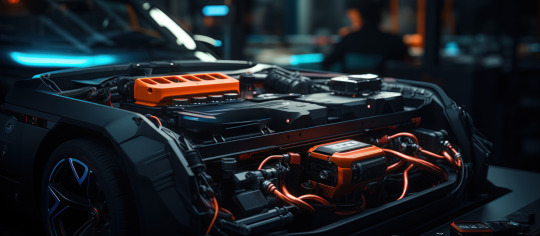
Mini Coopers are equipped with advanced electrical systems to power various features such as entertainment systems, lights, and sensors. However, electrical gremlins are a common headache for Mini owners. Issues like malfunctioning power windows, faulty sensors, and intermittent warning lights can arise due to wiring faults, blown fuses, or software glitches. While some problems can be resolved with basic troubleshooting, others may require professional diagnosis and repair.
Mini Cooper Ac System Leak Problems
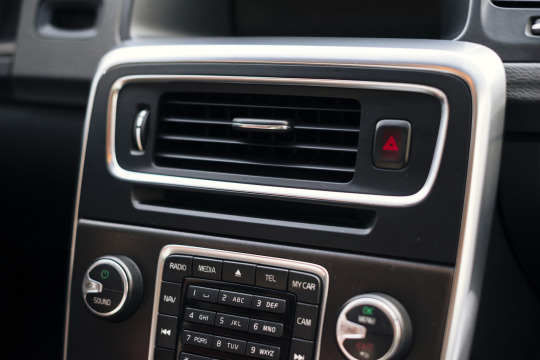
Mini Coopers are known for their efficient and compact engine designs, but they can be prone to cooling system leaks. Leaking coolant can lead to overheating, engine damage, and costly repairs if not addressed promptly. Common culprits include worn gaskets, cracked hoses, and faulty water pumps. Regular inspection of the cooling system and timely replacement of worn components can help prevent major issues down the road.
Mini Cooper Clutch and Transmission Problems
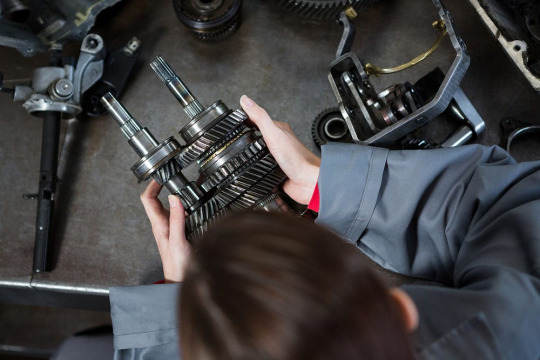
The manual transmission is a hallmark of the Mini driving experience, but it can also be a source of headaches for owners. Clutch wear and transmission issues are common, especially in older models or those subjected to aggressive driving habits. Symptoms may include slipping gears, grinding noises, or difficulty shifting. Proper clutch maintenance and avoiding rough gear changes can help prolong the life of these components.
Mini Cooper Oil Leaks and Engine Seals
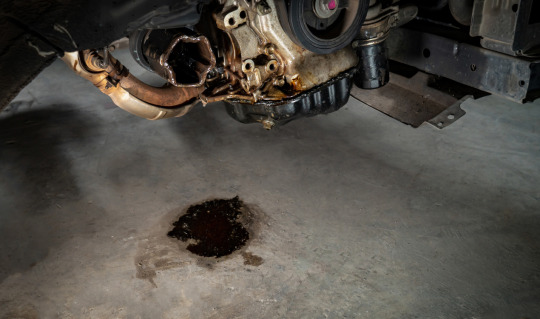
Mini Coopers are known for their peppy engines, but they can develop oil leaks over time. Engine oil leaks can occur due to worn seals, gaskets, or damaged components. Common leak points include the valve cover gasket, oil pan gasket, and crankshaft seal. Regular oil checks and timely repairs are essential to prevent engine damage and maintain optimal performance.
Mini Cooper Suspension and Steering Problems

Mini Coopers are praised for their nimble handling, but worn suspension and steering components can compromise driving dynamics and safety. Common problems include worn bushings, ball joints, and tie rod ends, which can cause excessive play, uneven tire wear, and poor handling. Regular suspension inspections and timely replacement of worn parts can help restore the Mini’s agile handling characteristics.
Mini Cooper Brake System Problems
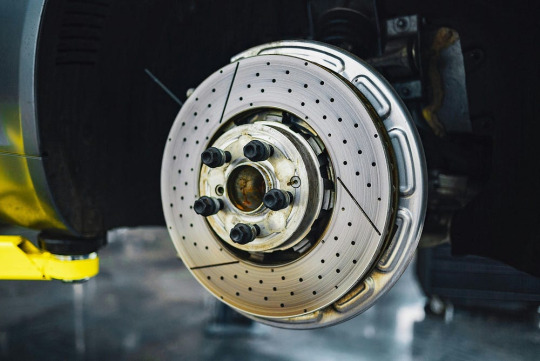
Reliable brakes are crucial for safe driving, but Mini Cooper owners may encounter brake system faults from time to time. Common issues include worn brake pads, warped rotors, and brake fluid leaks. Symptoms may include squealing noises, pulsating brake pedal, or reduced stopping power. Regular brake inspections and maintenance can help ensure optimal braking performance and safety on the road.
Mini Cooper Exterior Trim and Bodywork Problems

Mini Coopers are known for their distinctive styling, but owners may encounter issues with exterior trim and bodywork. Faded paint, rust spots, and loose trim pieces are common complaints, especially in older models or those exposed to harsh weather conditions. Proper care and maintenance, such as regular washing and waxing, can help preserve the Mini’s iconic appearance and prevent cosmetic issues.
How Service My Car Assists You ?
Have you reached a point where you're questioning, Where can I find the top ssangyong garage bolton for my Ssangyong car? Look no further! Service My Car provides top-notch servicing for your Ssangyong vehicles right here in Bolton. With our expert technicians and dedication to quality, we ensure your car gets the attention it deserves. Say goodbye to stress and hello to peace of mind knowing your Ssangyong is in capable hands. Trust Service My Car for all your servicing needs in Bolton.
Conclusion:
Owning a Mini Cooper is a delightful experience, but it comes with its fair share of repair challenges. From electrical gremlins to cooling system leaks, clutch problems to suspension issues, Mini owners must stay vigilant to maintain their cars’ performance and reliability. By addressing common repair issues promptly and proactively maintaining their vehicles, Mini Cooper owners can continue to enjoy the unique driving experience these iconic cars offer for years to come.
0 notes
Text
Emergency Car Mechanical Services in Kallangur

Whether you have a small daily driver or a prime mover, you can find the right mobile mechanic Kallangur to suit your needs and budget. Book online or call to chat with a local mechanic to get a quote. Here are some of the top mechanics in Kallangur:
The throwout bearing can become worn out over time due to the friction and pressure of the clutch pedal. This can cause chattering noises when you depress the clutch pedal. To know more about Emergency Car Mechanical Services, visit the Murrumba Auto Care website or call 732856933.
There is nothing more terrifying than your car's engine failing while you're driving. Whether you're going somewhere important or just running some errands, an engine failure is sure to put a wrench in your plans and, depending on the problem, it can be costly to fix.
Just like your heart, your vehicle's engine needs regular maintenance to keep it running smoothly. If this is neglected, parts will eventually wear out or become clogged. Emergency car repair is necessary when this happens, but the damage may not always be obvious.
Fortunately, there are many warning signs that your engine is about to fail. Some of these are minor, such as a Check Engine light that comes on or a fuel cap that isn't secured properly. Others are more serious, such as foul smells or oil patches on the ground where you park your car. If you notice any of these symptoms, it's a good idea to get your car checked by a mobile mechanic Kallangur as soon as possible.
When your car has an oil leak, it can be very difficult to find the source. It could be due to degraded engine gaskets or faulty connections. A good mobile mechanic can help you determine what the problem is and make necessary repairs. Before you call a mobile mechanic, make sure you crawl under your car to check the oil pan seals, oil drain plug, and valve cover gaskets. It’s also a good idea to have the mechanic inspect a used vehicle before you buy it. A reliable mobile mechanic can perform a pre-purchase inspection to save you time and money.
A tire is a circular band that fits tightly around the rim of the wheel and allows it to roll smoothly on a road or prepared track. It also protects the side of the car from curbs and other obstacles. Tires come in different compounds that affect their gripping ability, rolling resistance and durability. The three main parts of the tire are the tread, carcass and inner liner. The tread largely determines how the tire grips the road and how much it flexes under load. The carcass is made of steel cords that are bonded into the rubber and mainly determines the strength of the tire. The inner liner is a thin layer of rubber that prevents air from escaping the tire.
Tire beads hold the tire to the rim of the wheel. They are bronze-plated, high tensile steel wires that clamp the tire firmly against the rim. Bead filler is a rubber compound inside the beads that provides stability to the lower sidewall and bead area.
The clutch is a mechanical device that transfers power from the engine to the transmission system of a car. It connects and disconnects the drive from the engine while the vehicle is moving or at rest. It also reduces vibrations and provides smooth operation while shifting gears.
Its working principle is quite simple. When you press the clutch pedal, it flexes diaphragm springs and releases levers. This causes the outer edge of the pressure plate to float over the flywheel and slackens the clamping force on the friction disc. The amount of friction generated by the slipping plates determines how much torque/power is transferred.
When the clutch is fully engaged, it prevents the transmission from absorbing excessive heat that can cause damage to its components. If you notice the clutch rattling when you shift gears, it's probably time to visit your mechanic for inspection and repair. This could mean that the pressure plate, release bearing or throw-out bearing is worn out and needs replacing. To know more about Emergency Car Mechanical Services, visit the Murrumba Auto Care website or call 732856933.
#car air conditioning repair Kallangur#Suspension and Steering#Mechanical Services Kallangur#car service Kallangur#Suspension services#emergency car mechanical services#Vehicle repair#mechanics Kallangur
0 notes
Text

Oil seals used for? Oil seals are used to protect shafts and bearings from ingress of dirt and foreign matter and egress of oil or grease. An oil seal generally consists of an outer circular metal part and an inner flexible member that does the actual sealing and is bonded to the metal part by chemical adhesive agents. oil seal is best? Image result for INDUSTRIAL OIL SEAL Buna (Nitrile) oil seals are the most widely used elastomer in sealing. Nitrile oil seals have great resistance to petroleum oils and fuels, mineral oils and greases, hydraulic fluids, water, steam, and alcohol. seal in oil and gas industry? Mechanical Seals for the Oil Industry A mechanical seal is a device that helps join two moving or rotating parts together while preventing the leakage of fluid or gas. oil seals prevent leakage? Oil seals, also referred to as shaft seals, are widely used to prevent the leakage of medium (such as oils and grease) along a rotating shaft. This leak prevention is primarily achieved by the sealing element which can be made from a wide range of materials that are chosen according to each application. seals can leak oil? If the valve cover gasket is not the source of your oil leak, the following gaskets or seals may be likely sources: Oil drain plug seal. Oil pan gasket. Front and rear crankshaft seals. Camshaft seals – overhead cam engines. Timing cover gasket. Intake manifold end seals. Cylinder head gasket. role of a seal? Conducting insertions and extractions by sea, air or land to accomplish covert, Special Warfare/Special Operations missions. Capturing high-value enemy personnel and terrorists around the world. Collecting information and intelligence through special reconnaissance missions seals leak? Image result If there are no fluids available to lubricate, the seal runs dry which causes extra friction and heat. The seal will burn or melt and become damaged, which causes fluid leakage due to the pressure. Even a few seconds of dry running can cause heat cracks or blisters, which leads to a leaking pump shaft seal
#bestindustrialproducts#Bestoffersindia#OnTimeDelivery#bestprice#goodservice#donateorgansavelives#oil seals used for?#Oil seals are used to protect shafts and bearings from ingress of dirt and foreign matter and egress of oil or grease. An oil seal generall#oil seal is best?#Image result for INDUSTRIAL OIL SEAL#Buna (Nitrile) oil seals are the most widely used elastomer in sealing. Nitrile oil seals have great resistance to petroleum oils and fuels#mineral oils and greases#hydraulic fluids#water#steam#and alcohol.#seal in oil and gas industry?#Mechanical Seals for the Oil Industry#A mechanical seal is a device that helps join two moving or rotating parts together while preventing the leakage of fluid or gas.#oil seals prevent leakage?#Oil seals#also referred to as shaft seals#are widely used to prevent the leakage of medium (such as oils and grease) along a rotating shaft. This leak prevention is primarily achiev#seals can leak oil?#If the valve cover gasket is not the source of your oil leak#the following gaskets or seals may be likely sources:#Oil drain plug seal.#Oil pan gasket.#Front and rear crankshaft seals.#Camshaft seals – overhead cam engines.
0 notes
Text
Why Is My Car Leaking Oil When Parked?
Parking your car and then coming back to find a pool of oil can be a pretty disheartening sight. After all, oil is an essential part of your car’s mechanics and if it’s leaking, that means something isn’t right. There are a few reasons why your car might be leaking oil when parked and in this blog post, we’ll explore some of the most common ones. From old age to cracked seals, there are a few different things that could be causing your car to leak oil. Keep reading to learn more about why your car might be leaking oil and what you can do to fix the problem.

Understanding why your car is leaking oil
If your car is leaking oil when parked, it's most likely due to a faulty seal or gasket. Over time, these parts can wear out and cause oil to leak from your engine. There are a few other potential causes of an oil leak, but they're much less common. If you notice any oil leaks, it's best to take your car to a mechanic so they can diagnose the problem and make the necessary repairs.
Different types of oil leaks
There are many different types of oil leaks, each with its own unique set of symptoms and causes. The most common type of oil leak is the engine oil leak. Engine oil leaks can be caused by a variety of things, including a faulty oil seal, a damaged gasket, or even a cracked engine block. Another common type of oil leak is the transmission fluid leak. Transmission fluid leaks are often caused by a broken seals or gaskets, or even by a cracked transmission case. Other less common types of oil leaks include power steering fluid leaks and differential fluid leaks. Power steering fluid leaks are usually caused by a worn out pump or hose, while differential fluid leaks can be caused by a variety of things, including a bad bearing or an improper gear mesh.
Fixing an oil leak
If your car is leaking oil when parked, there are a few things you can do to fix the problem. First, you'll need to identify where the leak is coming from. Once you've located the source of the leak, you can either repair it yourself or take it to a mechanic. If the leak is coming from a gasket or seal, you may be able to replace it yourself. However, if the leak is coming from a more serious component, such as the engine block or oil pan, you'll need to take your car to a mechanic. Once at a mechanic, they will likely pressure test the system to find the source of the leak and then make the necessary repairs.
Prevention tips to avoid oil leaks
If you've recently noticed oil leaking from your car when it's parked, there are a few potential causes and prevention tips you can keep in mind to avoid future leaks. One common cause of oil leaks is simply due to age and wear and tear on your car - over time, seals and gaskets can degrade and start to leak. You can help prevent this by regularly checking your car for any leaks and getting them fixed as soon as possible. Another potential cause of oil leaks is if you overfill your engine oil. Be sure to check your car's owner's manual to see how much oil it takes, and don't add any more than that. Adding too much oil can put pressure on seals and gaskets, causing them to leak. Finally, if you frequently drive in stop-and-go traffic or on dusty roads, this can also lead to oil leaks as debris builds up on seals and gaskets. Try to avoid these driving conditions when possible, or at least make sure to clean off your car regularly to remove any built-up debris.
The Different Types of Oil Leaks
There are three different types of oil leaks: the engine seal leak, the gasket leak, and the valve cover gasket leak. The engine seal leak is the most common type of oil leak. It occurs when the seals around the cylinder walls wear out and allow oil to seep through. The gasket leak is less common than the engine seal leak, but it can still occur. It happens when the gaskets that seal the engine block and cylinder head warp or crack, allowing oil to escape. The valve cover gasket leak is the least common type of oil leak. It occurs when the valve cover gasket wears out and allows oil to seep through.
What Causes an Oil Leak?
Oil leaks are most commonly caused by a faulty gasket or seal. Over time, these parts can break down and allow oil to seep out. Other causes of oil leaks include damaged engine parts, such as the crankshaft or piston rings, and wear and tear on the oil pan itself. In rare cases, an oil leak can also be caused by a manufacturing defect.
How to Fix an Oil Leak

If your car is leaking oil when parked, there are a few things you can do to fix the issue. First, check the oil level and add more if needed. Next, locate the source of the leak and clean up any oil that has already leaked. Finally, repair or replace the part that is causing the leak.
Visit my website...
Conclusion
In conclusion, there are a few reasons why your car could be leaking oil when parked. It's important to get this checked out by a professional as soon as possible so that they can determine the cause and fix it before it causes any further damage. In the meantime, you can help prevent the leak by regularly checking your oil levels and topping up when necessary.
0 notes
Text
Buying A Used Hyundai I20? Here's What To Look For

The Hyundai i20 is a great car that has received a lot of praise from both experts and users alike. When it comes to buy Hyundai used cars Melbourne it's available with several different engine options, and it's designed to be fun to drive. However, there are some issues you should keep in mind before buying a used one of these beauties if you don't want any surprises later on down the road.
Engine
Once you've found Hyundai used cars Melbourne that looks promising, it's time to check the engine. Start by checking the oil level. If it's low or empty, that could be an indication of something more serious, like a leaky gasket or blown head gasket.
Make sure there aren't any white smoke emissions coming from the exhaust pipe; this means there's coolant in your engine, and you need to get it checked out immediately. When listening to your chosen car's engine roar as it accelerates away from traffic lights, pay attention to how much noise there is���a rattly noise may mean worn valve guides or piston rings on their way out.
The next step is checking how well the car performs under load: take it on some highways and up steep hills and make sure it doesn't struggle through them (or, worse yet, stall). A quick test drive will also give you an idea of whether the transmission shifts properly; if not, then either there's something wrong with one of its parts, or perhaps a sensor went bad somewhere along the line here.
Exterior and Interior
The most important thing to check is the paintwork. Make sure there are no dents, scratches or rust spots anywhere on the bodywork. The car should be free from any kind of damage and look tidy overall.
Next, make sure that all panels are properly aligned and fit together closely (without gaps between them). This can be an indication of major accident history in the vehicle's past if one side of the car has been repaired more than once to get rid of dents with different methods (e.g., body filler vs fibreglass).

Radio reception
Check the radio reception before you buy. The Hyundai i20 has a good radio reception, but it's still worth checking before you sign on the dotted line. A car with bad radio reception can be frustrating for drivers who like to listen to music or news programmes on their daily commute, so it's important to check this feature before buying.
The type of antenna fitted in a vehicle can affect how well it receives stations through the airwaves, which is why some vehicles have better than others when it comes to picking up strong signals from across town. Similarly, some types of car bodywork are better at blocking out external noise and interference from other electrical devices such as street lights or other cars' engines—which means you'll often find that newer models perform better than older ones when it comes to picking up clear broadcasts without any interference whatsoever!
Gearbox
To check the gearbox, you'll want to start by checking its oil level. The car should have enough oil to cover the whole of the gearbox and be at a consistent level. If there is too little oil in the car, it could indicate that there is a leak somewhere and may need replacing or repairing.
Checking for leaks can be done by checking underneath your car for any spots where water has collected underneath it (this indicates that an oil leak might exist). You can also take your car for a test drive—any grinding noises from shifting gears would indicate that there are broken or missing gears inside of your transmission's gearbox, which means major repairs will need to be made before driving again.
Check the underbody for any damage.
Now, check the underbody for any damage. Look for corrosion and oil leaks, and make sure that there's no rust or dents. Lastly, you should check for any paint damage as well.
Conclusion
If you're looking to buy a used Hyundai i20, these are the things you should check for. We hope this guide has given you some insight into what to look for when buying Hyundai used cars Melbourne. Source Link :- https://rickythomas21.blogspot.com/2022/10/buying-used-hyundai-i20-heres-what-to.html
#hyundai used cars melbourne#hyundai servicing melbourne#hyundai melbourne#hyundai dealership used cars melbourne#hyundai dealers in melbourne#car service melton
0 notes
Text
Audi Repair Shop Near Me
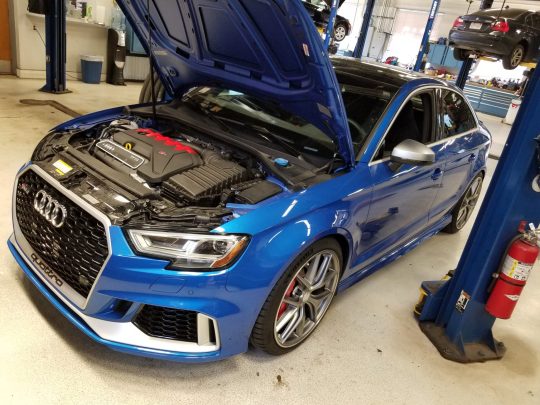
If you are an Audi then this car may be your prized possession, but like most other European cars, they can have their common maintenance issues. Some issues aren’t necessarily unique to Audi but you should still be aware of them and get them fixed as soon as you can by bringing it to an Audi Repair Shop near me in West Palm Beach FL.
Here are the most common Audi repair issues:
Oil Leaks
Oil leaks in Audis likely come from the valve cover gasket and the camshaft tensioner. It is likely that you will have to replace one or both of these parts but it will depend on which one is displaying a leak.
Electrical Components
Failure of electrical components is very common, many have reported that the most common failure is the digital dashboard display or console, malfunctioning tail lamps and erratic lights. OE equipment replacement is the simple solution. Check your warranty coverage.
Ignition Coil or Spark Plug Failure
Failure of the Ignition coil is the top common mechanical problem, plus it’s the top reason behind the engine misfiring. You will need installation of the spark plugs and the engine will need to be tuned to factory specifications. Fortunately, ignition coils and spark plugs are inexpensive.
Catalytic Converter Failure
Catalytic converters are likely to fail because of clogging or carbon build-up that can solidify and jam the exhaust flow. You can replace the catalytic converter but it’s not viable as a long-term solution. Our team at Foreign Affairs will be able to locate the true cause and suggest a solution. Just be sure to keep the engine fine-tuned and make sure it’s regularly maintained.
Exhaust Gas Re-Circulation (EGR)
EGR, a system that lowers the temperatures in the combustion chamber, can succumb to carbon build-up as well as wear and tear.
Content Source: https://foreignaffairsauto.com/common-audi-repairs/
0 notes
Text
How Ball Valve Works
Among the most commonly used types of valves, the name of Ball Valves will be on top. It has a widely growing demand in the various types of industry. In this article, we will be discussing how these valves can help you with your wide branch of applications. To know about all the major components of a ball valve and how they work, keep reading this blog further.
What is a Ball Valve?
Like the name lies, the ball valves are having a ball-like disc that works like a barrier when the valve is in a closed position. Ball Valve suppliers design these valves to be a quarter-turn but can also have a rotatory type when it diverts or controls the flow of media. In applications that need tight sealing, ball valves are mostly used. They are renowned to have low drops of pressure and even if the media has very high volume, the 90-degree turn makes it easy t operate. Due to their long service life, they are quite economical. Plumbing Ball Valves are perfect for liquids or gases having little particles. With scurries, they fail to work perfectly as the soft elastomeric seats get easily damaged by this. They may have throttling capacities, but ball valves are not used as such as the throttling friction can damage the seats easily.
Ball valve parts
Ball valves are having various variants that depend on the types of materials and the design. Also, the working mechanism of a 3-way ball valve is also different from that of common ball valves. But among all the ball valves, there are seven types of components that can be found commonly –
· Body
OF the entire ball valve, the body works as the framework. It works as a barrier to the load pressure from the media and there is no pressure transfer for the pipes. The body supports all the present components and is connected to the piping with the help of a thread, welded or bolted joints. These valves can be differentiated based on the body type which is often forged or cast.
· Stem
A plumbing ball valve’s closing or opening is facilitated by the stem. This also makes the connection between the disc of the ball with the lever, actuator or handle. The rotation of the ball disc is due to the stem that closes or opens it.
· Packing
This is the main gasket that is mostly required for sealing the stem and the bonnet. Several issues occur in this area for which it is required to have proper installation. If it is made very loose, then leaks will occur and if too tight, then the movement of the stem will get restricted.
· Bonnet
The opening of the valve has a cover which is known as the bonnet. This works as a secondary pressure barrier. This part holds all the components which are present inside together after they are put inside the body of the valve. The bonnet can either be cast or forged and is often made up of the same material as that of the body of the valve.
· Ball
This is the ball valve’s disc. This is one of the most important boundaries of pressure, the media of the pressure works against the disc while it remains in the closed position. The ball discs are mostly made up of any durable material or forged steel. The disc can either suspend like the floating ball valve or like a truncation-mounted ball valve, it can be mounted.
· Seat
This is in some cases known as the seal rings and here the disc of the ball stays in the rest position. Depending on the ball disc’s design, the seat either remains attached or unattached with the ball.
· Actuator
This device creates the rotation which is required by the ball valve for the disc to open. In many cases, they have a power source. Also, with the help of a remote, some of the actuators can be controlled remotely so that the valve will mainly work even if they are placed in hard to reach or remote areas. Actuators can work as hand wheels for operating the ball valves manually. Some other actuator types include the pneumatic types, solenoid types, gears, hydraulic types.
How Does a Ball Valve Work?
Conventionally, the ball valves have a ball that helps for controlling the pipeline’s flow. Via the center of the ball there lies a bore. The Plumbing Ball Valves can be quickly turned on and off. When the valve remains in the open position, the bore gets lined up with the opening of the pipeline allowing the gas, oil or any type of other liquid to pass via it. Towards the closed position, it can be turned where the bore remains perpendicular to the opening of the pipe and thus the flow of the content moving via it gets blocked. Normally, the ball valves only require having this rotation of 90 degrees for operating as a standard which allows the quick closure and opening with ease. In many cases, it is desired to have a complete rotation of 360 degrees.
In pipeline applications, the ball valve is often the most preferred valve option as it is much reliable and offers an air-tight seal when turned off and becomes easy and quick to operate. They are very compact and conventionally need a very less amount of maintenance.
So, we hope this article will clear all your doubts and things which you wanted to know about ball valves and how they work. Once you get to completely understand the working of the ball valves, you can make quick decisions about if these valves will be suitable for your uses or not. Dutco Tennant LLC can offer you a wide range of Plumbing Ball Valves for all your requirements in the Middle East.
0 notes
Text
7 Common Problems Found in All Audi Models

Owning luxurious vehicles like Audi is a dream for many car lovers. These cars are introduced in the car with the best interior and style as well as provide you a comfortable driving experience. Like other vehicles, the Audi has some familiar problems that you should know about before it starts to cost you the earth in repair bills. The issues in the Audi don’t mean that it is an inferior car because the technologies applied behind the car are topnotch. Here is the list of 7 Audi problems that you should fix before it leads to a big issue.
Failed electrical components
No matter what types of vehicles you are driving, all of them are installed with numerous electrical components. Like the other vehicles, Audi cars also end up with some electrical quirks. You will notice numerous electrical component failed issues in the car such as flashing lights, digital display issues, and cracked tail pumps prematurely. Now the mechanics are using several diagnostic equipment for identifying the electrical issues and fixing them quickly and easily.
Oil leakage
Many times, you will notice that your Audi engine will produce a burning oil smell and the reason behind is oil leaking from the valve covers or gasket seals. Moreover, the oil leaking refers to a fire hazard for its passengers. Apart from the other parts, the oil leaks also damage its electrical connectors and control modules when it is observed by the wires. If you unnoticed the issues, then it will damage other parts and lead to a more expensive repair.
Bad odor
Some of the Audi drivers complain that when they sit in the car for a few hours, they smell a musty odor coming from the heating system. There are several sources that can produce bad odor in the Audi and the most common among them are the growing mold inside the air conditioning ducting system.
The whole process behind is, the available mold spores in the air can gather moisture during the air conditioning process and produce a bad odor. To remove the odor as well as to prevent the mold build-ups, you can apply a cleaning system once or twice a year to clean the air conditioning system.
Leakage of exhaust
Exhaust is the other leaking part of the Audi because the flexible joint of the exhaust is placed between the down-pipe and catalytic converters. Eventually, the joints of the exhaust cracked over time and started to leak. As a result, produce deeper exhaust sounds and damage the flex pipe which is a part of the catalytic converter. Caught the issues as soon as possible for preventing the catalytic converter damages in your Audi and replacing the flexible joint to fix the issues.
Failed ignition component
In your Audi, the ignition coil or spark plugs also cause serious damages. The ignition coil damages require expensive repair in your car and may affect its other parts. Due to the damaged ignition coil or spark plugs, you will notice engine misfiring issues in the Audi. If you neglect the engine misfiring issues, then it may lead to engine stalling and damage other components of the ignition. Early repairing of the failed ignition components may save your money.
Unusual sound
During the cold weather, you will hear an unusual sound coming from your Audi engine such as rattling noise or knocking noise. The most interesting thing is when the engine has started the sounds commonly last for 1 to 2 seconds. The sounds generally arise in the Audi due to the damaged camshaft chain tensioners or camshaft adjusters. If the noises continue longer, then it’s always advisable to take the Audi to a garage for analysis.
Illuminated check engine light
Check engine light of the Audi can be illuminated when it is running rough and misfires. The engine misfiring can arise either from a single cylinder or randomly across multiple cylinders. The most common issue behind the illuminated check engine light is the ignition coil and the emissions. Apart from these two issues, there are a number of reasons that can cause this situation. So, it’s best to fix the issues before it damages the parts poorly.
Conclusion
Whenever you notice any of the issues in your Audi, take it to a certified Audi mechanic who has vast experience in foreign cars. They will diagnose the issues and fix them by using the latest equipment.
0 notes
Text
Under Car Leaks Identification Guide

No one wants a leaky vehicle. However some leaks can be very revealing, helping you spot early signs of damage and danger to your engine and your car’s fluid systems – such as the brakes, power steering and transmission. Most leaks will appear under the car as patches of different coloured fluids. If you do spot a leak – what does it mean and what systems do you need to check?
Low Threat Level Leaks
Clear Fluid Leaks
Most clear fluid leaks will be water. However, there is a small chance they could be coolant – so look closely and check there isn’t a green, blue or yellow tint – and the spill is free from odour.
What to do?
Water is usually nothing to worry about. It could be condensation coming from your air conditioning unit in the summer, or the car’s exhaust in the winter. If the leak seems to be persistent, then take your vehicle to the mechanic.
Blue and Green Fluid Leaks
Found a thin, watery fluid that smells a little like window cleaner? Chances are that this is windscreen washer fluid.
What to do?
Pop the hood of the car, and check out the fluid reservoir. Inspect it for cracks. If you can’t find any damage, then it may be worth getting a professional to check the seals and lines.
Medium Threat Level Leaks
Brown or Black
Amber, brown or black fluid leaks, especially those that are slick to the touch and hard to remove from your fingers, are likely to be oil. There will often be a smell of petrol or fuel about the liquid. Older leaks can also permeate concrete, leaving a darker residue.

What to do?
Many cars, especially those with higher mileage will have very minor leaks, which never actually affect the running of the car. Be sure to regularly check the dipstick, and keep your oil levels topped up as failure to do so could result in severe engine damage.
If you find a more substantial leak, then get under the hood and take a look at the engine. Problems like a valve cover gasket leak are easy enough to repair yourself – but if you can’t find the leak, or there’s a serious outpouring of oil (beyond a few mere drips) then get down the garage, and get a professional pair of eyes on the problem.
Reddish Brown
Reddish brown leaks under the steering system will usually be power steering fluid. A slight sweet, burnt odour will confirm your suspicions. Leaks can often originate from cracks, lose connections in the hoses and tubing that carry the fluid around the system.
What to do?
Check the fluid levels in the system to get an idea of the severity of the leak. Be careful about getting behind the wheel as driving with an impaired system could cause lasting damage to your power steering system.
Once you’ve diagnosed a leak, then scout round the system. Some connection issues and pipework problems can be easily solved with a little home-grown mechanical work. However, larger problems will definitely require professional attention, as failing to resolve issues could end up with you replacing your entire steering rack.
Serious Threat Level Leaks
Green or Yellow Leaks
Coolant can come in a variety of different colours. So if you see brighter leaks under your car, then the chances are these originate from the coolant system. The real giveaway is a distinctively sweet smell, not unlike candy floss, and a very slimy texture when rubbed against your finger.
What to do?
If your coolant system is leaking, this could lead to your engine seriously overheating – causing widespread damage and problems to a number of parts. The most common place for coolant leaks to occur is around the radiator, but with hoses going all around the engine, it can be hard to locate the exact source of the leak.
As with most smaller leaks, if you’re looking at a loose cap or connection, you may be able to make the repair yourself. With cracked systems or broken reservoirs, then it’s time to call in the mechanics, as this could lead to calamitous problems that will cost large amounts of cash to fix.
Red Leaks
Red is certainly for danger in this case. Red leaks generally originate from your vehicle’s transmission system, and will occur on the ground which the front and middle section of were parked over. It is quite a powerful liquid and can even cause stains on your driveway’s brickwork or concrete.
What to do?
If you think you’ve damaged the transmission, then it’s best to get the professionals in straight away. Cars that cannot find the right gear are extremely dangerous. If you’re going at speed, and the transmission fails outright, then this can put you and other road users in an extremely dangerous situation. Play it safe, and get your car towed to the nearest garage.
Amber and Multi-Coloured Leaks
Brownish liquid that has a prism effect under light? This is probably due to a fuel leak. You’ll recognise the smell of diesel and petrol from repeatedly filling your car at the pump – making identification quite easy. Remember that fuel however, especially petrol, can be extremely flammable, so if you suspect a leak keep all heat sources and flames away from the affected area.
What to do?
Fortunately most fuel tanks can be patched up, as long as your car isn’t so old that the rust is basically holding it together. However it is a job that will require the attention of a professional, making it another one on our list that requires a garage visit. Don’t put it off either as we’ve already mentioned – fuel leaks can be very dangerous.
Brown leaks
This is the worst of all leaks. The dreaded brake fluid leak. It’s a huge problem and one that should not under any circumstances be ignored. However, fortunately such leaks are pretty rare. The fluid will be slippery to the touch and usually the location of such leaks will be around the wheels.
What to do?
There’s no two ways about this… If you even consider getting in a car with faulty brakes then you don’t deserve your driving licence. It’s the fast way to get someone hurt or even killed. Call the breakdown service and get a professional lift to the garage. With questionable brakes you cannot even get a tow.
Our Top Tip for Leak Spotting
Think your vehicle might have a leak? Cut up some old cardboard and fashion it into a sheet. Leave it underneath the front of the car for the night, and it will allow you to pinpoint the source of any leaks. Simply pull out the cardboard out from under the vehicle, and you should be able to identify the area of the leak – meaning less scouting around and a faster identification of the problem.
The post Under Car Leaks Identification Guide appeared first on BreakerLink Blog.
from BreakerLink Blog https://ift.tt/2BfWbUb via IFTTT
0 notes
Text
Understanding BMW Problems: A Comprehensive Guide

BMW, an acronym for Bayerische Motoren Werke AG, is a revered name in the automotive industry, known for its luxurious vehicles that combine elegance, comfort, and high performance. However, like any other car manufacturer, BMWs are not devoid of mechanical issues. This in-depth guide will dive into various BMW problems you might encounter, the models often affected, and how to address these issues to ensure your car's longevity and reliability.
1. Engine Overheating: A Common Occurrence in BMWs
One of the most frequently reported BMW problems is engine overheating, which can occur in various models, from the sporty BMW M3 to the luxurious BMW X5. It can manifest as a sudden rise in the temperature gauge, steam from the hood, or even an activated check engine light. This issue can be attributed to various factors such as a malfunctioning cooling system, a leaky radiator, or a worn-out water pump.
Cooling System Failure
The cooling system, responsible for regulating the engine's temperature, is a critical BMW component that can cause problems. This system's malfunction is a common BMW issue. The cooling system comprises several parts, such as the water pump and thermostat, which are prone to wear and tear. Regular servicing can help identify potential issues early and prevent costly repairs.
Water Pump Malfunctions
Water pump failure, a specific case within the cooling system, is a frequent concern for BMW owners. The water pump circulates coolant through the engine, preventing overheating. However, these pumps, especially in BMWs, are known for their high failure rate, which can lead to engine overheating if not addressed promptly.
Thermostat Problems
Another culprit for overheating issues in BMWs is a faulty thermostat. This component controls the flow of coolant based on the engine's temperature. A malfunctioning thermostat might fail to open as the engine heats up, preventing the cooling system from operating efficiently and causing the engine to overheat.
2. Oil Leaks: A Persistent Issue in BMWs

Oil leaks are another prevalent issue in BMWs, often leading to brown spots underneath the vehicle. Two common sources of oil leaks in BMWs are brittle valve cover gaskets and leaky oil filter gaskets.
In case you own a BMW car, and you are looking for an oil change then we would like to recommend ServiceMyCar, the best and trusted bmw service dubai center to change engine oil for your BMW car.
Brittle Valve Cover Gaskets
BMW engines are often plagued by oil leaks due to brittle valve cover gaskets. Over time, these gaskets, which are made from plastic or cork, can become brittle and develop cracks.
This can lead to oil leaks that, if ignored, can cause engine damage due to reduced lubrication.
Leaky Oil Filter Gaskets
Oil filter gaskets are another common source of oil leaks in BMWs. These gaskets, made from rubber, are located near various engine parts that require lubrication. Over time, accumulated grease and dirt can lead to gasket failure, causing an oil leak. Regular maintenance can help identify and fix this issue before it escalates.
3. Transmission Problems: A Significant Concern for BMW Owners

Transmission problems are a significant concern in BMWs, often manifesting as difficulty in gear shifting or the transmission slipping between gears. Certain models, such as the 2011 BMW X5, are particularly prone to these issues. Regular maintenance and inspections can help identify and address these problems before they escalate.
4. Fuel Pump Issues: A Common BMW Problem
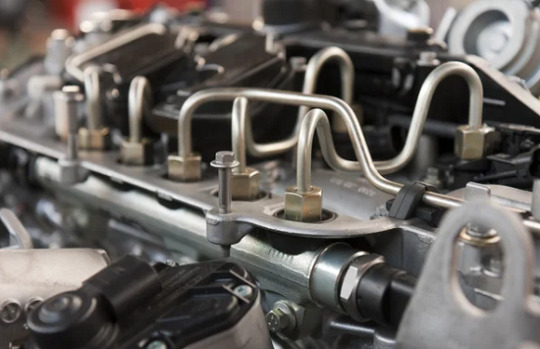
Fuel pump issues are a well-known BMW problem, often resulting in poor acceleration, engine stuttering at high speeds, or the engine refusing to start. BMW engines have two fuel pumps – a low-pressure pump that extracts gasoline from the tank, and a high-pressure pump that pushes the fuel into the combustion chamber. If the high-pressure pump malfunctions, it can lead to various engine issues.
5. Faulty Electronic Systems: An Achilles Heel for BMWs

BMW cars are equipped with advanced electronic systems that, unfortunately, are prone to malfunctions. Owners have reported issues with automatic headlights, electronic window systems, and central locking mechanisms. A BMW's electronic system issues can range from minor inconveniences, such as a stuck turn signal, to significant concerns like electrical malfunctions leading to a vehicle recall.
Automatic Headlight Issues
Automatic headlights, while convenient, can cause issues in some BMW models. These headlights sometimes remain on when not needed, draining the car's battery and potentially leading to other electronic problems.
Electric Window Malfunctions
Electric window malfunctions are a common issue in BMW models. The motor that operates the windows can fail, preventing the windows from fully closing. This can pose a security risk, as it leaves the vehicle vulnerable to theft.
Central Locking Mechanism Failure
Faulty central locking mechanisms can also pose a problem for BMW owners. This issue can prevent the car from being locked or unlocked remotely, causing inconvenience and potential security concerns.
6. Alloy Wheel Corrosion: Aesthetic and Performance Concern
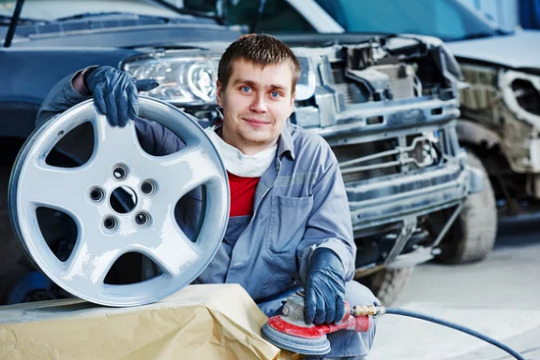
Corrosion of alloy wheels is a common issue in BMWs, affecting both the vehicle's aesthetics and performance. Corroded alloys can affect the wheels and the tires, reducing the car's overall performance. While there is no solution to fix the corrosion, regular maintenance and avoiding high-pressure water sources can help prevent the issue.
7. Door Handle Issues: A Unique Problem for BMW X5
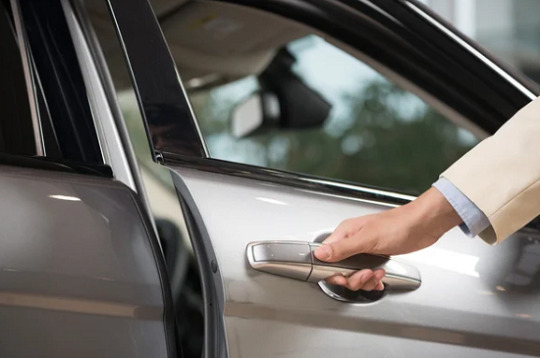
Owners of the BMW X5 model have reported issues with door handles. The door handles can physically operate as expected, but without unlocking and opening the door. This issue often requires a complete replacement of the door's locking mechanism.
8. Failing Electric Windows: A Potential Security Concern
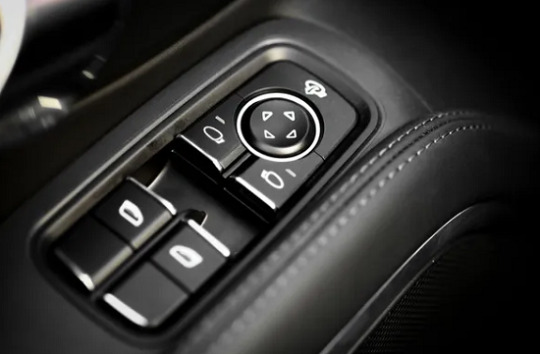
Electric window failure is another frequent issue in BMWs. The motor that operates the windows can give out, preventing the windows from closing fully. This not only affects comfort but also poses a security risk, as it makes the vehicle vulnerable to theft.
9. Heater Core and Coolant System Issues: A Comfort Concern
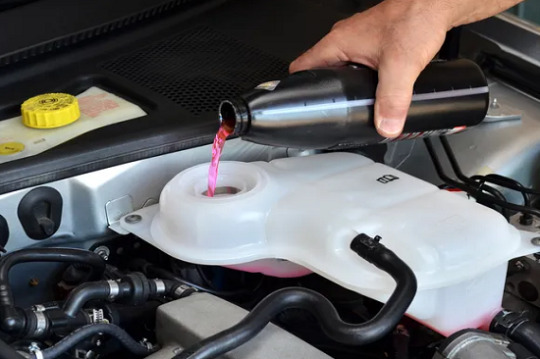
Some BMW owners have reported problems with the vehicle's coolant system and heater core. These issues can lead to the car overheating or not producing enough heat, negatively affecting the comfort inside the vehicle.
10. Spark Plug Failure: An Underlying Issue in BMWs
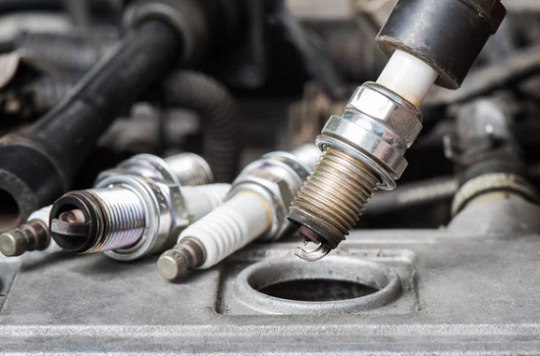
Spark plug failure is a common issue in BMWs. These vital components are responsible for creating the spark that ignites the fuel in the engine. If the spark plugs wear out faster than usual, it can lead to a loss of power and acceleration, or even engine failure.
Conclusion
While BMW vehicles are high-performance luxury cars, they are not immune to mechanical issues. Recognizing these common BMW problems and addressing them promptly can ensure the longevity and reliability of your vehicle. Regular maintenance and inspections can help identify potential issues before they escalate, saving you from costly repairs down the line. If your BMW is showing any signs of these common problems, it's advisable to have it inspected by a professional technician immediately.
Remember, a well-maintained BMW is not only a joy to drive but also a symbol of elegance and reliability. Enjoy your BMW to its fullest by keeping it in top condition and addressing any problems promptly. After all, prevention is better than cure, especially when it’s about maintaining your cherished BMW.
0 notes
Text
How To Determine Your Volkswagen’s Fluids And Common Leaks?

It is never a good feeling – driving out of the carport and witnessing a puddle trailing behind. Is your vehicle leaking oil? Or, is it the automotive fluid? So, here are some useful tips to identify common vehicle fluids and the sources of potential leakage.
Here you go!
Light brown to black? It’s engine oil!
If you notice that the oil dripping is dark brown to black or amber in colour – most likely, it’s the motor oil leaking.
As per automobile experts, oil leakage is the result of faulty gaskets (or, seals), valve covers. Thus, it’s a smart move to have your Volkswagen fixed at a VW service garage in Perth.
A small leak going unnoticed can wreak disastrous consequences later on!
Red or brown? Behold its transmission fluid
At times, transmission fluids looks like engine oil. To avoid the confusion, all vehicle manufacturers add a red dye to the transmission fluid so that it is easily identifiable.
And, yes. Do not forget the smell!
If you notice a pool of oil in the drive way accompanied with a pungent odour, most likely – it’s the transmission fluid leaking. But, why? Well, it can be caused from a number of reasons like radiator or cooler.
Don’t sit duck! Rush to a VW service station in Perth for a quick fix.
Clear droplets – water!
Before you say Goddamn it…wait wait!!! It wasn’t an April fool joke. As we’re discussing on fluids, you could be noticing a puddle of water but mistake it for something else.
So, don’t panic.
It’s probably from a faulty air-conditioner. As condensation build-up happens, it collects water and drains through a small tube. It’s not a major issue, but then a fix is surely necessary.
Usually these symptoms can be tuned up in routine maintenance. So, do not skip VW servicing in Perth at any cost!
0 notes
Text
Reasons behind Engine Oil Leaks in Your Car

The global automotive industry is witnessing rapid growth and car manufacturers are coming up with more affordable models for their customers. It is everyone's dream to own a car and nowadays, it is possible due to the affordable cars being manufactured by the car makers. However, owning a car also comes with certain responsibilities of maintenance and servicing which are equally important for the car. But it is often noticed that car owners get complacent when it comes to maintaining their car. This has an adverse effect on the running of the car as certain components in your car need to be maintained regularly and when they malfunction it will affect the running of the car.
Among the various parts in your car, the engine and the components related to it are considered the vital ones. One such important thing for the efficient performance of the engine is the engine oil. The engine oil is vital for the functioning of the various components of the engine and for better performance of the car. However, when you are not maintaining your car properly, then there are high chances of an engine oil leak in your car. Here are the factors that might cause an engine oil leak in your car.
Defective oil drain plug
The oil drain plug is one of the most important components of the engine which is used to screw into the bottom of your engine's oil pan. Moreover, it is removed during the oil change so as to oil the old engine oil present in the car to drain out before the new oil is poured in the car. However, if the threads of the drain plug are worn out or are misaligned, or are if the plug has become loose or is over tightened, then there is a high probability of engine oil leaking from this part of the car. You have to make sure that the drain plug has got a proper sealing ring and you need to replace it during each oil change to ensure a tight seal.
Malfunctioning valve cover gaskets
The valve cover gaskets are the most important parts in the fuel system of your car and as their name signifies they are a type of protective covering that attach around the valve assemblies. The primary function of the valve cover gaskets is to keep the engine oil which lubricates the entire valve assembly inside the engine where it circulates. Moreover, there are gaskets present in between the valve covers and the cylinder head where they attach so as to provide a seal between the two components. However, in due course of time, these gaskets can corrode and deteriorate which leads to the leakage of the engine oil from this part of the car.
Failure to change the oil
The oil loses its functionality when it gets old and produces sludge and other corrosive substances; consequently, there are other unwanted substances which are also produced in addition to sludge. Harmful substances like dirt, abrasive particles, metal fragments and byproducts of combustion accumulate in your engine oil in due course of time. Moreover, if you are not prompt in changing your engine oil and these contaminants stay for a long time in the engine oil, then they will wear out the gaskets and seals which will lead to a leakage of the engine oil.
Most of the time car owners are interested in carrying out an oil change in their car on their own as it is a very easy task. However, it will be best to take your car to a certified mechanic for an oil change as he will be able to identify oil leaks and other issues in your car before they become more complicated.
Damaged oil cooler lines
In most of the cars, there is a presence of an external oil cooler which are small radiator-like components that are placed in the air stream at the front of your car. The primary function of these components is to cool down the hot oil which will circulate through the cooler before returning to the engine. However, if the oil cooler is damaged or corroded then it will cause your engine oil to leak.
Finally
The engine oil is one of the most important fluids that is used in your car as it helps in the smooth running of the car. If you ever notice that the engine oil is leaking from your car, then take your car to an automotive repair shop to diagnose the source of the leakage and fix the issue immediately.
0 notes